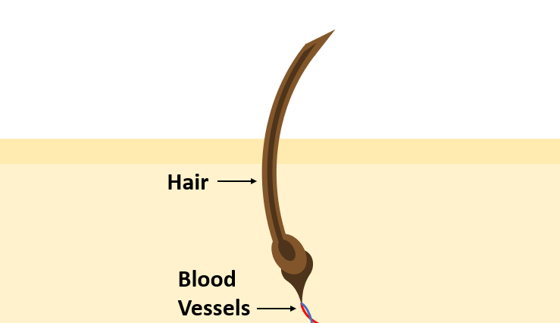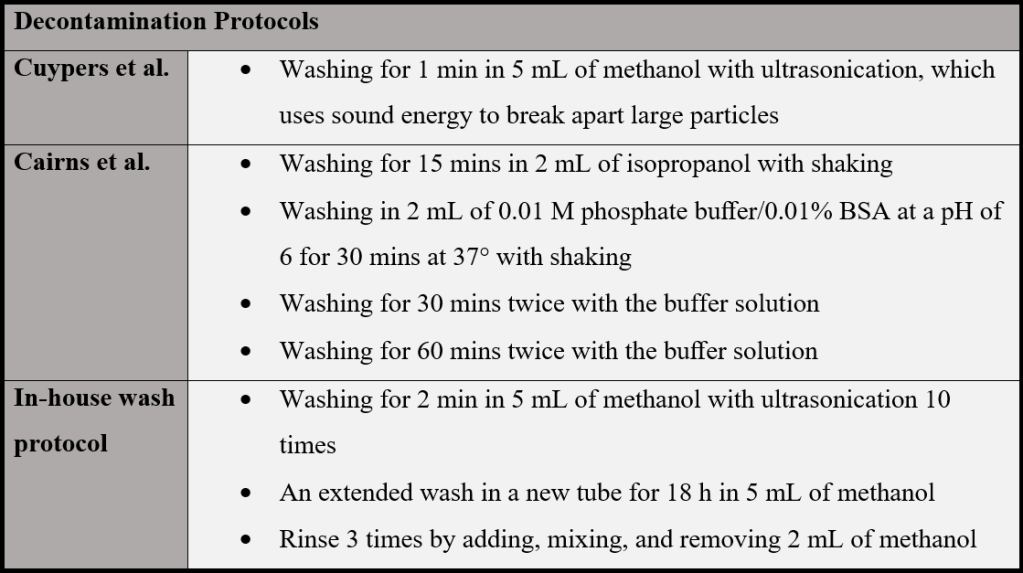Credit for featured photo: Petalouda62 from flicker, available via Creative Commons
What piece of valuable forensic evidence are many of us always carrying around? Here’s a hint, we have thousands of them! The answer: hair.
Hair is frequently used in forensic toxicology for the analysis of drugs of abuse and pharmaceuticals. When someone consistently abuses a drug, the compound incorporates into the root of the hair through the bloodstream. As hair grows overtime, this evidence stays in the hair (approx. several months) for longer than it would in blood (several days) or urine (about a week). Further, the rate of hair growth is consistent, about 1 cm a month, so toxicologist can determine an accurate window of time for when someone used a drug.

While hair can be very useful, the chemical evidence from hair follicles can be destroyed by shampoos, dyes, direct contact with drugs, and other environmental factors. In order to account for this, during sample preparation, hairs are washed using a variety of decontamination protocols.
These protocols aim to get rid of contaminants but leave any substances of interest intact. Recently, these decontamination processes have been called into question. In order to assess different decontamination methods, Kramer et al. from the Department of Forensic Pharmacology and Toxicology at Zurich Institute of Forensic Medicine used a variety of different decontamination protocols on samples of hair and assessed if these methods eliminate contamination without disturbing the incorporated evidence.

The scientists collected hairs from individuals that chronically consumed the drug Zolpidem (Figure 2). Some of these hairs were soaked in Zolpidem in order to mimic external contamination. Further, some of the hairs were longitudinally sectioned (sliced from tip to base) to assess if sectioned hairs allowed for better analysis. After the scientists prepared the hairs, they collected reference images using an electron microscope (gray image) and a pulsed ion beam method (colored image) to obtain atomic resolution maps of the hair surface (Figure 3).

The researchers then decontaminated the hairs using five different protocols, including an in-house wash protocol and two standard operating procedures (SOPs) from the United Nations Office on Drug and Crime and the Society of Hair Testing (Table 1). The in-house method proved to be the best washing method, as it was the only method able to remove decontaminants from the outer layers of the hair.

After decontamination, Kraemer et al. analyzed the hairs for Zolpidem using matrix-assisted laser desorption/ionization mass spectrometry (MALDI-MS). These results (Figure 4) shows that Zolpidem concentration decreased over the hair after decontamination, with the exception of the inner layer of the hair. This result suggests that the in-house protocol allowed Zolpidem found in these outer structures to be washed out while Zolpidem in the inner hair remained intact. The results also showed that crossed-sectioned hairs, highlighted in Figure 4 by orange bars, were better for the overall analysis of the sample, the research team could better differentiate contaminants in the hair’s outer structures from incorporated Zolpidem in the inner structures.

The scientist then soaked different Zolpidem-incorporated consumer hairs in Zolpidem-D6, a drug that is chemically similar to Zolpidem, or an analog, to mimic heavy contamination. They washed the hairs and analyzed drug incorporation using liquid chromatography-mass spectroscopy/mass spectroscopy (LC-MS/MS) to assess if their in-house method could decontaminate the outer layers of hair while preserving evidence in the inner layers. The results showed that the concentration of Zolpidem increased slightly with each wash cycle, while the concentration of the contaminant, Zolpidem-D6, decreased dramatically. This suggests that the in-house protocol removed the contaminant while the incorporated Zolpidem remained undisturbed (Figure 5). Further, Zolpidem that was incorporated via the bloodstream remains in the inner structure of the hair and can be analyzed after contaminants, which are found in outer layers of the hair, are removed.

The researchers demonstrated the effectiveness of their in-house protocol for the drug Zolpidem. They still, however, must investigate whether the method will also be effective for other drugs with different physiochemical properties, or with a high susceptibility for contamination, such as cocaine. They plan on optimizing their decontamination method in order to assess these types of substances.
| Title | Hair Analysis: Contamination versus Incorporation from the Circulatory System Investigations on Single Hair Samples Using Time-of-Flight Secondary Ion Mass Spectrometry and Matrix Assisted Laser Desorption/Ionization Mass Spectrometry |
| Authors | Robert Erne, Laetitia Bernard, Andrea E. Steuer, Markus R. Baumgartner, and Thomas Kraemer |
| Journal | Analytical Chemistry |
| Year | 2019 |
| Link | https://pubs.acs.org/doi/10.1021/acs.analchem.8b05866 |
| Citation | Erne, Robert; Bernard, Laetitia; Steuer, Andrea E.; Baumgartner, Markus R.; Kraemer, Thomas. Hair Analysis: Contamination versus Incorporation from the Circulatory System Investigations on Single Hair Samples Using Time-of-Flight Secondary Ion Mass Spectrometry and Matrix Assisted Laser Desorption/Ionization Mass Spectrometry. Anal. Chem. 2019, 91, 4132-4139. |

One thought on “Is There Evidence Hiding in Your Hair?”